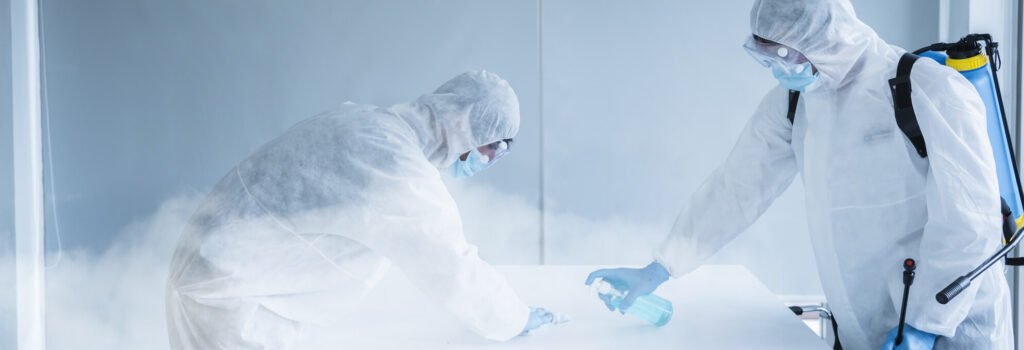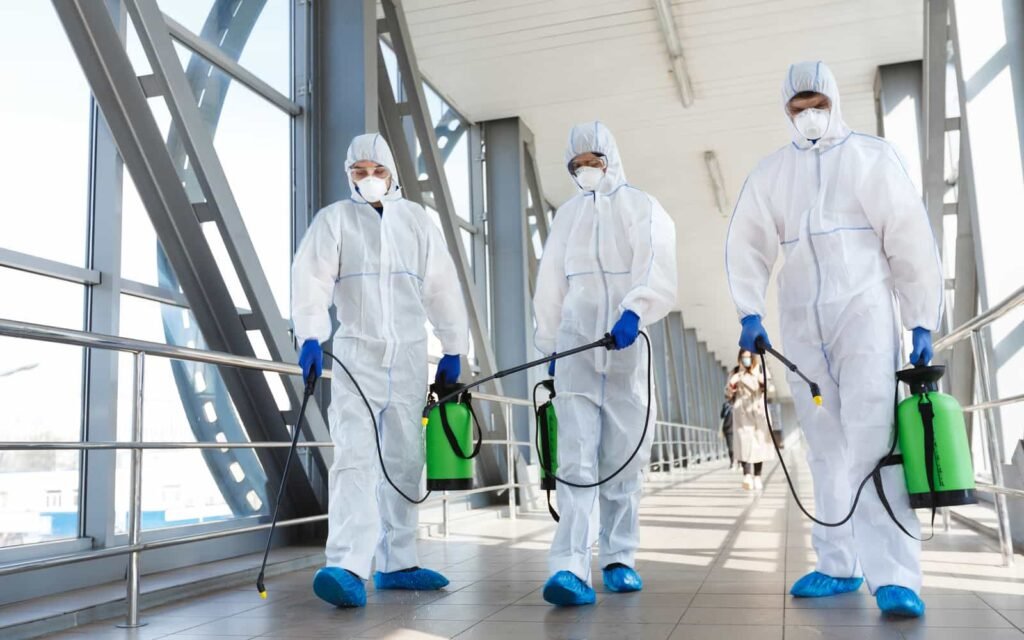Disinfecting work plays a crucial role in maintaining public health, especially in healthcare facilities, schools, offices, and homes. Whether responding to an outbreak or performing routine cleaning, proper disinfection helps eliminate harmful pathogens such as bacteria, viruses, and fungi. However, the chemicals used in disinfectants can pose significant risks to human health if not handled correctly. Therefore, personal protective equipment (PPE) is essential to ensure the safety of individuals conducting disinfection tasks.
Using the right PPE minimizes exposure to hazardous substances, prevents skin and eye irritation, reduces inhalation of toxic fumes, and protects against accidental contamination. Below is a comprehensive list of essential PPE for Disinfecting Work.

1. Gloves
Gloves are arguably the most important piece of PPE during disinfection. They protect the hands from direct contact with harsh chemicals such as bleach, alcohol-based solutions, quaternary ammonium compounds, and hydrogen peroxide. These substances can cause skin dryness, cracking, dermatitis, or chemical burns with prolonged exposure.
Disposable nitrile gloves are recommended over latex because they offer superior chemical resistance and are less likely to cause allergic reactions. Vinyl gloves may be used for light-duty cleaning but are not suitable for prolonged exposure to strong disinfectants. Gloves should be worn at all times when handling cleaning agents and changed regularly—especially if torn, punctured, or heavily soiled.
2. Face Masks or Respirators
Inhalation of chemical vapors or aerosolized disinfectants can irritate the respiratory system and, in some cases, lead to long-term lung damage. A face mask or respirator helps filter out airborne particles and chemical mists.
For general disinfection tasks involving low-to-moderate vapor release, a well-fitted surgical mask or a disposable KN95 respirator is sufficient. However, when using strong disinfectants in poorly ventilated areas—or when spraying large volumes of liquid—a half-face or full-face respirator equipped with appropriate cartridges (such as organic vapor filters) is strongly advised. Always ensure that respirators are properly fitted and meet national safety standards (e.g., NIOSH-approved in the U.S.).
3. Eye Protection
Splashes of disinfectant solutions can cause serious eye injuries, including chemical burns, redness, blurred vision, and even permanent damage. Safety goggles or a full-face shield are critical to prevent such incidents.
Safety goggles provide a secure seal around the eyes and protect against splashes from all angles. Regular eyeglasses or sunglasses do not offer adequate protection. For added safety, especially during high-pressure spraying or when working overhead, a face shield worn over goggles provides maximum coverage.
4. Protective Clothing (Gowns or Coveralls)
Protective clothing shields the body and underlying garments from chemical spills and contaminated surfaces. Disposable full body coveralls made from polypropylene or other non-woven materials are ideal for one-time use and help prevent cross-contamination.
Reusable gowns made from fluid-resistant fabric can also be used, provided they are laundered properly after each use. The clothing should fully cover arms and torso, with long sleeves and a high neck to minimize skin exposure. Avoid wearing personal clothing that absorbs liquids easily, such as cotton t-shirts or jeans, during disinfection procedures.
5. Closed-Toe Shoes or Shoe Covers
Foot protection is often overlooked but equally important. Spilled disinfectants can soak into regular shoes, leading to skin exposure or tracking contaminants into clean areas. Workers should wear closed-toe, slip-resistant shoes made from non-absorbent materials like rubber or vinyl.
In high-risk environments such as hospitals or biohazard cleanup sites, disposable shoe covers (booties) should be worn over footwear to prevent contamination. These should be removed carefully after completing the task to avoid spreading germs.
6. Hair Nets or Head Covers
Hair can trap chemical residues and become a source of secondary contamination. Wearing a hair net or disposable head cover ensures that loose hair is contained and reduces the risk of transferring contaminants to other surfaces or individuals. This is particularly important in sterile environments like operating rooms or laboratories.
7. Hearing Protection (if applicable)
While not always necessary, hearing protection may be needed when using industrial-grade fogging machines or pressure sprayers that generate loud noise over extended periods. Prolonged exposure to high-decibel equipment without ear protection can lead to hearing loss.
Earplugs or earmuffs should be worn if noise levels exceed 85 decibels, as recommended by occupational safety guidelines.
Proper Use and Disposal of PPE
Equipping oneself with PPE is only effective if used correctly. Workers should be trained in the proper donning (putting on) and doffing (removing) sequence to avoid self-contamination. For example, gloves should be removed first, followed by eye protection, then masks, and finally gowns or coveralls—always washing hands thoroughly afterward.
All disposable PPE items should be placed in designated waste containers labeled for hazardous or biohazardous waste, depending on the setting. Reusable PPE must be cleaned, disinfected, and stored appropriately before the next use.

Disinfecting is a vital practice for preventing disease transmission, but it comes with inherent risks. Using the correct PPE for disinfecting work safeguards workers from chemical exposure and biological hazards. The essential PPE list includes gloves, masks or respirators, eye protection, protective clothing, footwear protection, and head covers. Employers and individuals alike must prioritize safety by ensuring access to appropriate gear, providing training, and following established protocols. By doing so, disinfection efforts can be both effective and safe for everyone involved.


